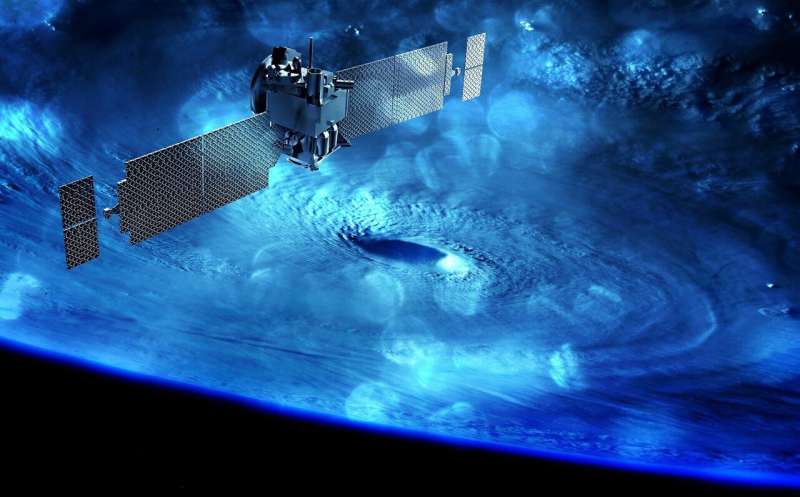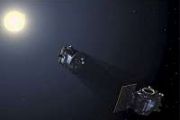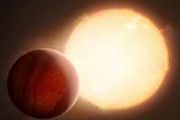
Copernical Team
NASA launches two small satellites to track hurricanes

NASA launched two small satellites designed to track tropical cyclones hour by hour from a base in New Zealand on Monday, in a project that could improve weather predictions on devastating storms.
The new storm trackers, sent into orbit on a rocket built by US company Rocket Lab, can fly over hurricanes (or typhoons in the Pacific) every hour, compared to every six hours with current satellites.
Researchers will be able to see storms evolve on an hourly basis, said NASA scientist Will McCarty at a press conference for the first launch of the TROPICS mission.
"We still need the large satellites," he added. "What we get from this is the ability to add more information to the flagship satellites that we already have."
A second Rocket Lab-built vessel is due to launch in about two weeks carrying two more satellites to complete a small constellation of four storm-tracking satellites.
The information gathered on rainfall, temperature and humidity could help scientists determine where a hurricane will make landfall and how intense it will be, helping people living in coastal areas be better prepared for possible evacuations.
Alexandrite laser crystals from Europe for space applications
 Alexandrite laser crystals are well suited for use in earth observation satellites. They are robust and enable laser systems with a tunable output wavelength. In the European Horizon 2020 project GALACTIC, the partners Laser Zentrum Hannover e.V. (LZH), Optomaterials S.r.l. (Italy) and Altechna (Lithuania) have now succeeded in establishing a solely European supply chain for alexandrite laser cr
Alexandrite laser crystals are well suited for use in earth observation satellites. They are robust and enable laser systems with a tunable output wavelength. In the European Horizon 2020 project GALACTIC, the partners Laser Zentrum Hannover e.V. (LZH), Optomaterials S.r.l. (Italy) and Altechna (Lithuania) have now succeeded in establishing a solely European supply chain for alexandrite laser cr Satellite Data, Applications Flowing Through SERVIR to Southeast Asia
 More than 50 million people in Vietnam, Cambodia, Thailand, Laos, and Myanmar draw water for drinking and agriculture from the Mekong River. With customized tools that use NASA observations and data, the people who manage that water supply have been improving their decision-making. It is a prime example of the work NASA and the U.S. Agency for International Development (USAID) have been doing to
More than 50 million people in Vietnam, Cambodia, Thailand, Laos, and Myanmar draw water for drinking and agriculture from the Mekong River. With customized tools that use NASA observations and data, the people who manage that water supply have been improving their decision-making. It is a prime example of the work NASA and the U.S. Agency for International Development (USAID) have been doing to Tianzhou-5 cargo craft separates from China's space station
 The China Manned Space Agency announced on Friday that the Tianzhou-5 cargo spacecraft successfully separated from China's space station at 3:26 p.m. Beijing Time. The spacecraft, which had been supporting the Shenzhou-15 crewed mission, is now in independent flight mode.
Tianzhou-5 was launched on November 12, 2022, from the Wenchang Spacecraft Launch Site in Hainan, a southern province o
The China Manned Space Agency announced on Friday that the Tianzhou-5 cargo spacecraft successfully separated from China's space station at 3:26 p.m. Beijing Time. The spacecraft, which had been supporting the Shenzhou-15 crewed mission, is now in independent flight mode.
Tianzhou-5 was launched on November 12, 2022, from the Wenchang Spacecraft Launch Site in Hainan, a southern province o Lockheed Martin Space announces changes designed to enhance speed and effectiveness
 The Space business area within Lockheed Martin (NYSE: LMT) has announced upcoming changes in order to promote greater effectiveness in delivering on customer missions, support growth and innovation, and create stronger collaboration with customers, suppliers and partners. The realignment follows the recent establishment of Lockheed Martin Space's Ignite organization, an innovation hub for rapid
The Space business area within Lockheed Martin (NYSE: LMT) has announced upcoming changes in order to promote greater effectiveness in delivering on customer missions, support growth and innovation, and create stronger collaboration with customers, suppliers and partners. The realignment follows the recent establishment of Lockheed Martin Space's Ignite organization, an innovation hub for rapid Sidus Space's external flight test returns radiation and structural integrity data for AU Experiment
 Sidus Space, Inc. (NASDAQ:SIDU), a Space and Defense-as-a-Service satellite company focused on mission-critical hardware manufacturing; multi-disciplinary engineering services; satellite design, production, launch planning, mission operations; and in-orbit support has announced the successful completion of a groundbreaking external flight test platform mission.
In November of 2019, twelve
Sidus Space, Inc. (NASDAQ:SIDU), a Space and Defense-as-a-Service satellite company focused on mission-critical hardware manufacturing; multi-disciplinary engineering services; satellite design, production, launch planning, mission operations; and in-orbit support has announced the successful completion of a groundbreaking external flight test platform mission.
In November of 2019, twelve Exciton fission - one photon in, two electrons out
 "When pentacene is excited by light, the electrons in the material rapidly react," explains Prof. Ralph Ernstorfer, a senior author of the study. "It was an open and very disputed question whether a photon excites two electrons directly or initially one electron, which subsequently shares its energy with another electron."
To unravel this mystery the researchers used time- and angle-resolv
"When pentacene is excited by light, the electrons in the material rapidly react," explains Prof. Ralph Ernstorfer, a senior author of the study. "It was an open and very disputed question whether a photon excites two electrons directly or initially one electron, which subsequently shares its energy with another electron."
To unravel this mystery the researchers used time- and angle-resolv Check And Double Check: Sols 3821-3822
 Earth planning day - Friday, May 5th, 2023. We continue our triage of the "Ubajara" potential drill site in this plan. In the last plan, we brushed the surface and did some further investigation of Ubajara's chemistry and structure (APXS, ChemCam and MAHLI). Information that came down this morning indicated that the target appears to be representative of what we have been seeing recently, as we
Earth planning day - Friday, May 5th, 2023. We continue our triage of the "Ubajara" potential drill site in this plan. In the last plan, we brushed the surface and did some further investigation of Ubajara's chemistry and structure (APXS, ChemCam and MAHLI). Information that came down this morning indicated that the target appears to be representative of what we have been seeing recently, as we ESA releases image of Earth showing detailed weather patterns
 The European Space Agency and Eumetsat on Thursday released a detailed image of the Earth and its weather patterns from the Meteostat Third Generation Imager-1 satellite.
The image, which was taken on March 18, shows cloud formations over large parts of Europe with details that were previously too small to capture in similar composite images.
"This image is a great example of wha
The European Space Agency and Eumetsat on Thursday released a detailed image of the Earth and its weather patterns from the Meteostat Third Generation Imager-1 satellite.
The image, which was taken on March 18, shows cloud formations over large parts of Europe with details that were previously too small to capture in similar composite images.
"This image is a great example of wha Control, Cooperation, Classification remain focus of DOD's Space Policy
 The assistant secretary of defense for space policy told senators yesterday that his office is "laser focused" on three priorities: space control, space cooperation and space classification.
"On space control, the department will protect and defend our national security interests from the growing scope and scale of space and counterspace threats, and we will protect and defend our service
The assistant secretary of defense for space policy told senators yesterday that his office is "laser focused" on three priorities: space control, space cooperation and space classification.
"On space control, the department will protect and defend our national security interests from the growing scope and scale of space and counterspace threats, and we will protect and defend our service 































